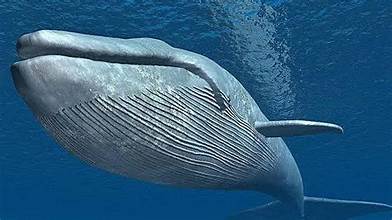The 12 biggest Animals in the world

The animal kingdom is vast and diverse, and among its most impressive animals are the giants, creatures that command attention for their size alone. From the deepest depths of the ocean to the highest skies, Earth’s largest animals are found in a variety of environments, demonstrating nature’s incredible size and adaptability. In this article, we take a closer look at 12 of the world’s largest animals, exploring their characteristics, habitats, and notable features. Each animal on this list earns its place through its exceptional size, whether that be mass, body length, or wingspan. —
###1. Blue Whale (Balaenoptera musculus)
– Habitat: Ocean – Size: Up to 30 meters long and weighing 200 tons Blue whales are the largest animals in history, even surpassing the largest dinosaurs. These marine mammals roam the oceans of the world, but are usually found in the waters of Antarctica and the Pacific Ocean. Blue whales are filter feeders, eating tiny shrimp-like animals called krill. An adult blue whale can eat up to four tons of krill per day. Although their massive bodies require vast amounts of food, they are gentle giants with no true natural predators when fully grown. Despite its size, it can swim at speeds of up to 20 miles per hour if necessary. Her heart alone weighs about 1,200 pounds, and her tongue weighs as much as an elephant’s. Despite being endangered due to past commercial whaling activities, conservation efforts are slowly increasing their numbers. — The 12 biggest Animals in the world.
### 2. African Elephant (Loxodonta africana)
– Habitat: Sub-Saharan Africa – Size: Up to 13 feet at the shoulder and weighing 6 to 7 tons The African elephant is the largest land animal on Earth. This gentle giant is known for its large ears, long trunk, and ivory tusks. They play a vital role in ecosystems by shaping the landscape, such as by cutting trees to make way for other species and creating water holes during dry periods. Elephants have complex social structures and are known for their intelligence and strong emotional bonds. A matriarch leads a herd made up mainly of females and their young, while males tend to live alone or form small bachelor groups. Although African elephants are awe-inspiring creatures, they face serious threats, including poaching for their tusks and habitat loss due to human activities. — The 12 biggest Animals in the world
###3. Giant Squid (Mesonychoteuthis hamiltoni) –
Habitat: Deep Southern Ocean – Size: Estimated length 14 meters, weight 700 kg The giant squid is the largest invertebrate known to science. These mysterious creatures live in the deep waters of the Southern Ocean around Antarctica and are rarely seen alive. Much of what we know about them comes from specimens accidentally caught by deep-sea fishermen. Unlike other species of squid, this giant squid has large hooks on its tentacles to capture its prey. Its large eyes, the largest in the animal kingdom, help it see even in the pitch-black depths of the ocean. Giant squids are known to fight sperm whales, which feed on them, leaving scars on the whales’ bodies that testify to their ferocity. — The 12 biggest Animals in the world
### 4. Whale Shark (Rhincodon typus)
– Habitat: Warm oceans around the world, including tropical and subtropical seas – Size: Up to 12 meters long and weighing 20 tons The whale shark is the largest fish in the ocean. Despite its size, it is a gentle filter feeder that uses its wide mouth to eat plankton, small fish, and other microorganisms. Whale sharks are found in warm waters around the world, often near coral reefs, and are known to travel long distances in search of food. These majestic creatures are frequently spotted by divers and swimming with whale sharks is an absolute must for many ocean lovers. Although protected in many countries, they are threatened by fishing, pollution and habitat destruction. — The 12 biggest Animals in the world
### 5. Saltwater Crocodile (Crocodylus porosus)
– Habitat: Coastal regions of Southeast Asia, Northern Australia and India – Size: Up to 7 meters in length and weighing 1000 kg The saltwater crocodile is the largest living reptile and one of the most fearsome predators in the world. These crocodiles are known for their immense strength and can take down large prey such as buffalo, deer and even sharks. Saltwater crocodiles are opportunistic hunters, patiently waiting in the water to ambush their prey before delivering a deadly bite. Their powerful jaws can exert more than 3,700 pounds of force per square inch, the strongest bite force of any living animal. — The 12 biggest Animals in the worldThe 12 biggest Animals in the worldThe 12 biggest Animals in the worldThe 12 biggest Animals in the worldThe 12 biggest Animals in the worldThe 12 biggest Animals in the worldThe 12 biggest Animals in the worldThe 12 biggest Animals in the worldThe 12 biggest Animals in the worldThe 12 biggest Animals in the worldThe 12 biggest Animals in the worldThe 12 biggest Animals in the worldThe 12 biggest Animals in the world
### 6. Giraffe (Giraffa camlopardalis)
– Habitat: African savanna – Size: Height 18 feet (5.5 meters), weight 1,600-3,000 pounds (800-1,300 kg) Giraffes are the world’s largest land animals and are known for their long necks and legs. Giraffes use their height to reach leaves and branches that other herbivores cannot reach, giving them access to food sources with less competition. Their favorite food is the leaves of acacia trees, which are often covered with thorns, but giraffes have adapted to picking them without harm. Despite their size, giraffes are graceful animals and can run short distances at speeds of up to 35 miles per hour. Their size also allows them to scout predators, such as lions, from long distances. The world’s largest amphibians. These elusive creatures live in freshwater habitats and feed on fish, insects, and crustaceans. Their size and distinctive appearance make them one of the most unique animals on Earth, but habitat loss and overhunting for the pet trade and traditional medicine have made them endangered. Giant salamanders are known for their cry, which is reminiscent of a baby’s cry, earning them the nickname “baby fish” in Chinese.
###7. Brown Bear (Ursus arctos) and Polar Bear (Ursus maritimus)
– Habitat (Brown Bear): North America, Europe, and Asia – Habitat (Polar Bear): Arctic regions – Size: Up to 10 feet (3 meters) in length, 1,500 pounds (680 kg) in weight (for both species) The brown bear and polar bear share the title of the largest land carnivores. Brown bears are found in a variety of habitats, from the forests of North America to the mountains of Russia. They are omnivores and will eat anything from berries to large mammals. Polar bears, on the other hand, are native to the Arctic and primarily feed on seals. Their large size and thick layer of blubber help them survive in the harsh, freezing environment. As powerful swimmers, they can cover long distances in search of food, but due to climate change and melting sea ice, they are increasingly struggling to find sustenance. —
### 8. Ostrich (Struthio camelus)
– Habitat: African savannas and deserts – Size: Up to 9 feet (2.8 meters) in height, 300 pounds (136 kg) in weight The ostrich is the largest bird on Earth. Though flightless, these birds can run at speeds of up to 45 miles per hour, making them the fastest birds on land. Ostriches have long, powerful legs that they use to defend themselves from predators with kicks that can kill lions. Ostriches live in groups called flocks, and their size and speed allow them to escape many predators. They are primarily herbivores, but they also eat insects and small animals. —
### 9. Green Anaconda (Eunectes murinus)
– Habitat: Amazon rainforest, South America – Size: Up to 9 meters in length and 250 kg in weight The green anaconda is the heaviest snake in the world and one of the longest. These massive constrictors live in swamps, marshes, and slow-moving rivers in South America, where they ambush their prey. Anacondas can take down large animals, including caimans, deer, and capybaras, by coiling around them and suffocating them. Despite their size, anacondas are elusive and seldom seen by humans. They spend much of their time in the water, where they are surprisingly agile. —
### 10. Chinese Giant Salamander (Andrias davidianus)
– Habitat: Rivers and lakes in China – Size: Up to 6 feet (1.8 meters) in length, 130 pounds (59 kg) in weight The Chinese giant salamander is the largest amphibian in the world. These elusive creatures live in freshwater habitats, where they feed on fish, insects, and crustaceans. Their large size and distinctive appearance make them one of the most unique animals on the planet, but they are critically endangered due to habitat loss and over-harvesting for the pet trade and traditional medicine. Giant salamanders are known for their vocalizations, which resemble a baby crying, earning them the nickname “infant fish” in Chinese. —
### 11. Giant Manta Ray (Manta birostris)
– Habitat: Tropical and subtropical waters worldwide – Size: Wingspan up to 29 feet (8.8 meters), 3,600 pounds (1,600 kg) in weight The giant manta ray is the largest ray species in the ocean. With their wide, flat bodies and graceful movements, manta rays are often described as “flying” through the water. They are filter feeders, consuming plankton as they swim, and are known for their intelligence and curiosity. Manta rays have been observed leaping out of the water, a behavior thought to be related to communication, mating, or parasite removal. While not aggressive, they can be difficult to study due to their migratory nature. —
### 12. Cape Buffalo (Syncerus caffer)
– Habitat: Sub-Saharan Africa – Size: Shoulder height 1.7 meters, weight up to 1,000 kg The Cape buffalo is one of the most dangerous animals in Africa, responsible for more deaths than any other large mammal on the continent. Known for their unpredictable temperament, the Cape buffalo can be forceful and aggressive, especially if injured or threatened. These animals live in herds, and their size and strength help them fend off predators such as lions and hyenas. Cape buffalo are also known for their loyalty to their herd, often standing firm to protect weaker herds from danger. —
### Conclusion The sheer diversity of the world’s largest animals is astonishing. From the blue whale’s dominance of the oceans to the African elephant’s reign on land, these giants play critical roles in their ecosystems. While some of these animals face threats from habitat loss, hunting, or climate change, they continue to inspire awe and wonder in those lucky enough to witness them in their natural habitats. Understanding and protecting these creatures is essential, not just for their survival but for the health of the planet as a whole.
Visit our website bangladeshtodays.org


